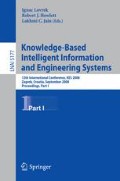Abstract
I argue that data becomes temporarily interesting by itself to some self-improving, but computationally limited, subjective observer once he learns to predict or compress the data in a better way. Curiosity is the desire to create or discover more data that allows for compression progress. This drive motivates exploring infants, pure mathematicians, composers, artists, dancers, comedians, yourself, and recent artificial systems.
Access this chapter
Tax calculation will be finalised at checkout
Purchases are for personal use only
References
Schmidhuber, J.: Simple Algorithmic Principles of Discovery, Subjective Beauty, Selective Attention, Curiosity & Creativity. In: Corruble, V., Takeda, M., Suzuki, E. (eds.) Proc. 10th Intl. Conf. on Discovery Science (DS 2007). LNCS (LNAI), vol. 4755, pp. 26–38. Springer, Heidelberg (2007); Also In: Hutter, M., Servedio, R. A., Takimoto, E. (eds.) Proc. 18th Intl. Conf. on Algorithmic Learning Theory (ALT 2007). LNCS (LNAI), vol.4754, p. 32. Springer, Heidelberg (2007)
Schmidhuber, J.: Developmental Robotics, Optimal Artificial Curiosity, Creativity, Music, and the Fine Arts. Connection Science 18(2), 173–187 (2006)
Schmidhuber, J.: Hierarchies of generalized Kolmogorov complexities and nonenumerable universal measures computable in the limit. International Journal of Foundations of Computer Science 13(4), 587–612 (2002)
Schmidhuber, J.: Exploring the Predictable. In: Ghosh, S.T. (ed.) Advances in Evolutionary Computing, pp. 579–612. Springer, Heidelberg (2002)
Schmidhuber, J.: Low-Complexity Art. Leonardo, Journal of the International Society for the Arts, Sciences, and Technology 30(2), 97–103 (1997)
Schmidhuber, J.: A possibility for implementing curiosity and boredom in model-building neural controllers. In: Meyer, J.A., Wilson, S.W. (eds.) Proc. of the International Conference on Simulation of Adaptive Behavior: From Animals to Animats, pp. 222–227. MIT Press/Bradford Books (1991)
Schmidhuber, J.: Curious model-building control systems. In: Proc. International Joint Conference on Neural Networks, Singapore, vol. 2, pp. 1458–1463. IEEE, Los Alamitos (1991)
Author information
Authors and Affiliations
Editor information
Rights and permissions
Copyright information
© 2008 Springer-Verlag Berlin Heidelberg
About this paper
Cite this paper
Schmidhuber, J. (2008). Driven by Compression Progress. In: Lovrek, I., Howlett, R.J., Jain, L.C. (eds) Knowledge-Based Intelligent Information and Engineering Systems. KES 2008. Lecture Notes in Computer Science(), vol 5177. Springer, Berlin, Heidelberg. https://doi.org/10.1007/978-3-540-85563-7_2
Download citation
DOI: https://doi.org/10.1007/978-3-540-85563-7_2
Publisher Name: Springer, Berlin, Heidelberg
Print ISBN: 978-3-540-85562-0
Online ISBN: 978-3-540-85563-7
eBook Packages: Computer ScienceComputer Science (R0)

